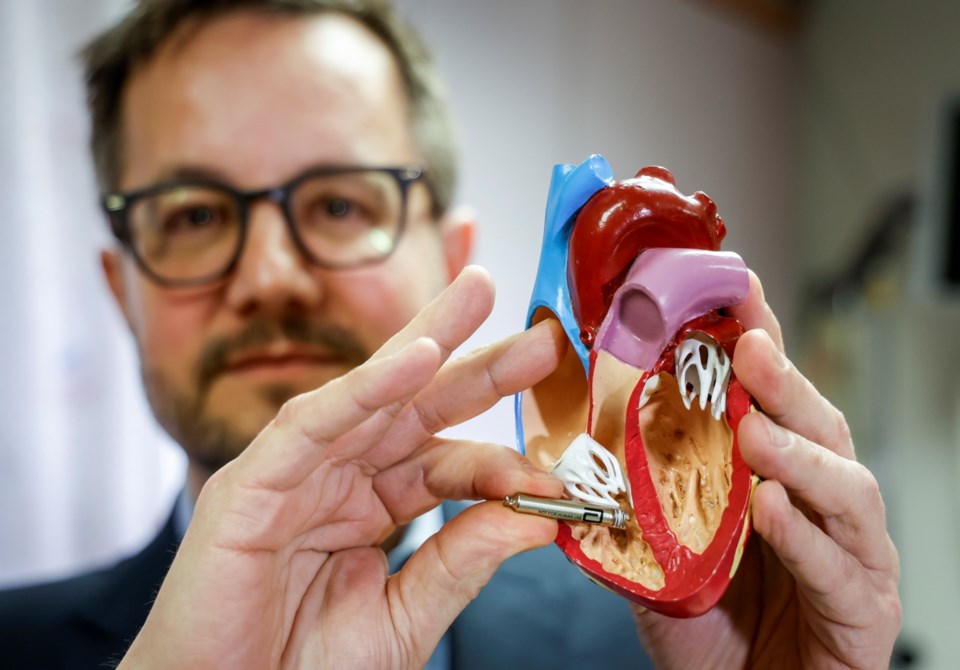CALGARY — A new innovative miniaturized pacemaker, developed in part by a Calgary cardiologist, has been given approval for use on patients beyond the clinical research stage.
The Foothills Medical Centre in Calgary is also to become a training centre for physicians to provide the technology to future patients.
A pacemaker keeps a person's heartbeat from going too slow and helps regulate heart rhythm by sending a tiny electrical signal to the heart, causing it to beat.
The new device is leadless, meaning it doesn't have wires connecting it to a person's bloodstream and then to their heart. It received Health Canada approval last year.
"The approval is a game-changer in cardiovascular care and improved care for Canadians," said Dr. Derek Exner, a cardiologist and heart rhythm specialist. He is also an associate dean of Innovation and Commercialization at the University of Calgary's Cumming School of Medicine.
"It allows Canadians access to this new pacemaker technology, and that means improved quality of life."
The first implantation of the leadless pacemaker took place in Calgary in November 2020.
Exner led Canadian and Australian teams involved in a decade-long international study and clinical trials evaluating the effectiveness of the devices. Foothills Medical Centre was one of 55 locations worldwide, including three in Canada.
The leadless pacemaker is about 3.8 centimetres long, which is less than the size of a AAA battery.
Exner said it's easier to implant and replace, and has a battery life of more than 15 years. It's inserted through a small incision in the groin and guided into the right lower heart chamber.
"Patients forget that they have a pacemaker," he said.
"That's really rewarding, taking the device from a place where it is a slight inconvenience to a place where they forget they have it."
This report by The Canadian Press was first published Feb. 9, 2023
Bill Graveland, The Canadian Press



